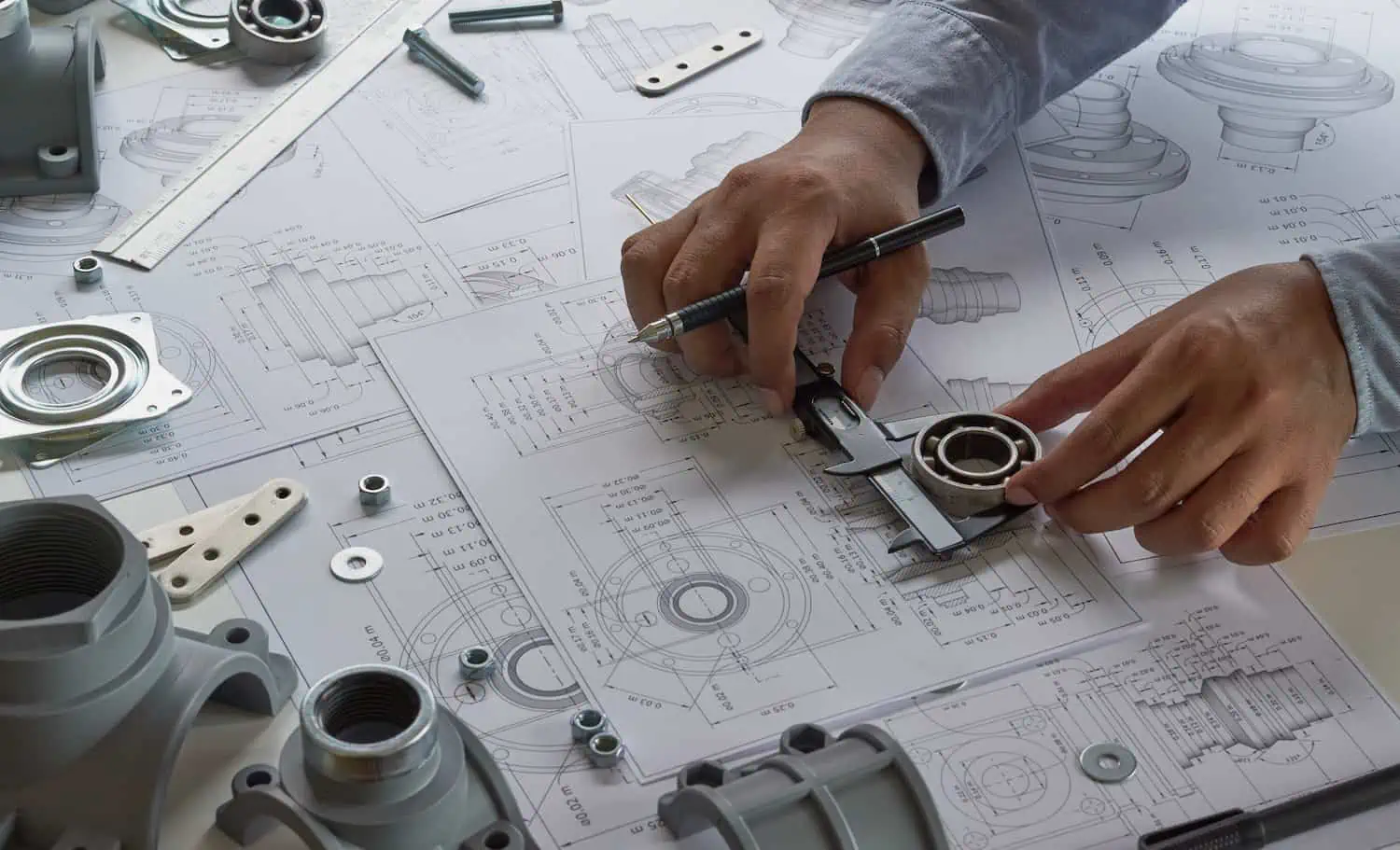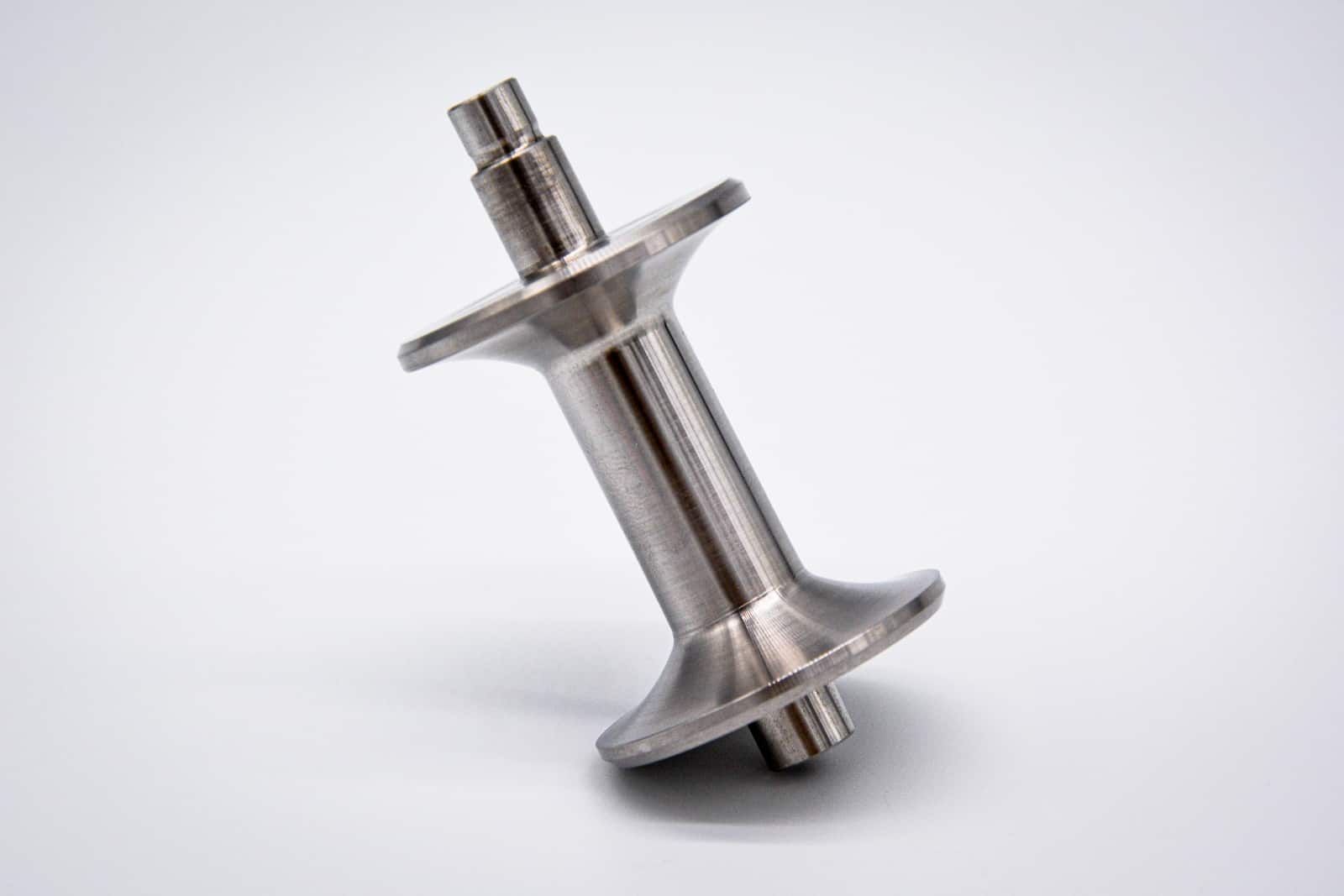In today’s competitive market, prototyping is a cornerstone of product development. It is a phase where ideas transform into tangible models, allowing for a preliminary design, functionality, and feasibility evaluation.
Here, DFM plays a pivotal role for manufacturing engineers and product designers. DFM aligns design objectives with manufacturing capabilities, ensuring that prototypes are innovative and manufacturable at a reasonable cost and time frame early in the design phase.
Fundamental Principles and General Rules of DFM
Design for Manufacturing is essential in ensuring that products are innovative, practical, and efficient to produce. Understanding DFM’s fundamental principles and general rules is crucial for any successful product development process.
- Process Selection in DFM
Choosing the right manufacturing process is critical in DFM. Product cost, material, volume, and surface finish must be evaluated to select the most appropriate manufacturing method. This decision influences other aspects of product development, making early finalisation vital.

- Design Considerations for Manufacturability
Ensuring manufacturability during early design phases is key. DFM tools help predict the practicality of a design, aiming to reduce production costs and lead times. It’s about ensuring innovative ideas can be turned into tangible products without excessive cost or complexity.
- Material Selection
Material choice, including its grade and form, significantly affects manufacturing operations. The best material choice considerations include surface finish, opacity, flammability, strength, thermal/electrical resistance, and machinability. These factors guide towards a material that aligns with the product’s expectations.
- Service Environment and Product Functionality
Understanding the service environment of the product is crucial. For example, products designed for extreme temperatures have different requirements than those used in dusty conditions. This aspect of DFM ensures the product functions well in its intended environment.
- Importance of Testing in DFM
Testing and compliance are integral to the DFM process. Ensuring that a product can pass certifications is as important as cost reduction. This step helps avoid hiccups later on, ensuring market readiness.

General DFM Rules Across Product Types
- Minimising part count: Combining parts into a single component where possible reduces cost and improves efficiency. It simplifies manufacturing, inspection, testing, and assembly.
- Part orientation: Correct orientation of parts facilitates handling. Symmetrical design, or clear guiding features for asymmetrical parts, aids in assembly.
- Designing multi-functional parts: Creating parts that serve multiple purposes or can be used across product lines enhances cost-effectiveness.
- Facilitating alignments: Incorporating design features like chamfers and moderate radius sizes helps avoid assembly errors and damage.
- Modular assemblies: Using modular assemblies allows for easier changes to individual components without redesigning the entire product.
- Using standard components: Standardized parts are easier to source, incorporate, and lower the Bill of Materials (BOM) cost.
- Finish and tolerances: Deciding on finish and tolerances based on criticality can save costs. It’s about balancing durability with cost-effectiveness.
- Design for fixtures and automated assembly: Parts should be designed to fit into fixtures and machine tools for automated assembly lines, ensuring accuracy in subsequent operations.

Benefits of DFM in Prototyping and Production
Design for Manufacturing (DFM) stands at the critical intersection of design and manufacturing. It ensures the smooth transition of products from the conceptual 3D model stage to final production. DFM is not just a set of guidelines; it is a mindset that integrates manufacturing considerations into the design process.
Ensuring Functionality and Cost-Effectiveness
The core of DFM lies in its ability to enhance product functionality while keeping the production cost in check. DFM guarantees that the product envisioned can be manufactured efficiently and cost-effectively. It evaluates factors like material choices, production techniques, and labor costs, ensuring the final product meets quality standards and is financially viable.
Streamlining Prototyping with DFM
DFM streamlines the prototyping process, making it more efficient and less prone to errors. By considering manufacturing constraints early on, DFM helps design multi-functional parts that are easier to produce, thus speeding up prototype development.
From Prototyping to Production: A Seamless Journey
It also plays a pivotal role in moving a product from prototyping to production. By using processes such as CNC machining, rapid injection molding, and 3D printing, DFM tests whether a concept is practical for mass production. This approach ensures that the product meets design expectations and is ready for the manufacturing line.
Simplifying the Manufacturing Process
Through DFM prototyping, the production process becomes more straightforward and often more automated. Simplified designs mean fewer machines and setups are needed, helping reduce manufacturing costs. This production efficiency is a significant asset in a competitive market where speed and cost-effectiveness are paramount.
Sustainability and Quality in Manufacturing
Emphasising sustainability, DFM promotes the use of raw materials that are not only cost-effective but also environmentally friendly. This approach reduces waste and enhances the overall product quality. High-quality design leads to fewer defects, translating into cost savings and increased manufacturing efficiency.
DFM vs. DFA: Understanding the Differences and Contributions
Design for Manufacturing (DFM) and Design for Assembly (DFA) are two distinct approaches to product development, each with a unique focus and goal. They both aim at improving the manufacturing and assembly process. DFM centres on designing products to be manufactured cost-effectively.
Conversely, DFA concentrates on simplifying assembly steps. It involves designing products so they can be assembled quickly and accurately by manufacturing personnel or consumers.
Here, the focus is reducing labour costs and assembly time, ensuring that components can be assembled without confusion or error. DFA aims to simplify the assembly process so that even those without professional training can assemble the product without difficulties or damage.
How Both Approaches Contribute to Efficient Prototyping and Manufacturing
DFM and DFA play vital roles in streamlining the prototyping and manufacturing processes. DFM’s focus on manufacturing ensures cost-effective production, reducing material waste and optimising production line efficiency. This approach is critical in the early stages of prototyping, where design choices significantly impact production costs and feasibility.
In prototyping, DFA principles help create models that reflect the final product’s design and its assembly process, ensuring that the transition from prototype to mass production is smooth and error-free.

DFM for Different Rapid Prototyping Processes
Vacuum Casting and Injection Molding
DFM plays a crucial role in ensuring defect-free production in both vacuum casting and injection molding. Vacuum casting, involving liquid urethane poured into molds, usually experiences lower molded-in stress than injection molding, where molten material is injected into pre-made cavities.
This difference affects the design approach in DFM. Vacuum casting suits simpler, single-piece models due to its less durable silicone molds, whereas the injection molding process is better for complex or multi-part designs with its more robust steel or aluminium molds.
DFM considerations like tolerances, undercuts, and wall thickness vary between these processes. For example, injection molding demands stricter wall thickness and undercut tolerances, necessitating a precise DFM approach to ensure seamless assembly and functionality.
CNC Machining
DFM in CNC machining focuses on ensuring parts are machined correctly and efficiently. Key DFM considerations include selecting suitable materials based on strength and compatibility with the machining process, ensuring part accessibility, and avoiding sharp internal corners due to the circular shape of CNC tools.
Thin-walled products require careful handling to prevent warping, and deep pockets in designs should be minimised. DFM in CNC machining, as practised by Xometry, involves balancing functionality and aesthetics to optimise production costs and lead times. Simplifying designs and choosing appropriate tolerances are crucial to making the CNC machining process more efficient and cost-effective.
Design for Additive Manufacturing (DFAM) and 3D Printing Specifics
DFM takes on a unique form in 3D printing called Design for Additive Manufacturing (DFAM). This approach is vital due to the widespread use of 3D printing and its specific design considerations.
DFAM involves understanding the limitations and capabilities of 3D printing technologies, such as the need for support in overhanging designs and the impact of layer orientation on part strength. Product designers must also consider material mechanical properties, as different 3D printing materials can vastly affect the functionality and durability of the final product.
Furthermore, optimizing designs for 3D printing can involve rethinking traditional manufacturing constraints and leveraging the ability of 3D printing to produce complex geometries and internal structures that would be impossible or prohibitively expensive with other manufacturing techniques.
DFM varies significantly across rapid prototyping processes, each with unique considerations and challenges. Whether it’s vacuum casting, injection molding, CNC machining, or 3D printing, applying DFM principles effectively ensures that prototypes are feasible in design and production, paving the way for successful, cost-effective manufacturing.

How to Complete a Basic DFM Check With Xometry
Xometry’s Instant Quoting Engine is enhanced with a feature that provides valuable Design for Manufacturing (DFM) feedback. When you upload your parts to our platform, the Instant Quoting Engine conducts a thorough geometry examination of your CAD file. It performs various preliminary checks aimed at evaluating the manufacturability of your design. If your CAD files contain elements that can’t be manufactured and need to be adjusted, you will see DFM feedback in red.
Depending on the outcome, you could either find your model ready for production or receive detailed, actionable suggestions for improvement. These suggestions are designed to refine your design, backed by specific tips aimed at enhancing the overall manufacturability of your parts.
Conclusion
Design for Manufacturing (DFM) is pivotal in expediting prototyping and ensuring long-term product viability. By integrating manufacturing considerations early, DFM streamlines the design process, resulting in efficient, cost-effective production and high-quality outcomes.
Integrating DFM at the design stage is crucial for sustainable manufacturing and market success. It helps in foreseeing and mitigating production challenges, thereby reducing waste and enhancing product functionality.
 Europe
Europe  Türkiye
Türkiye  United Kingdom
United Kingdom  Global
Global 

 Login with my Xometry account
Login with my Xometry account  0
0









Comment(0)